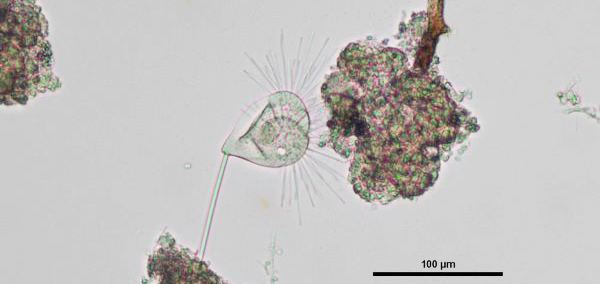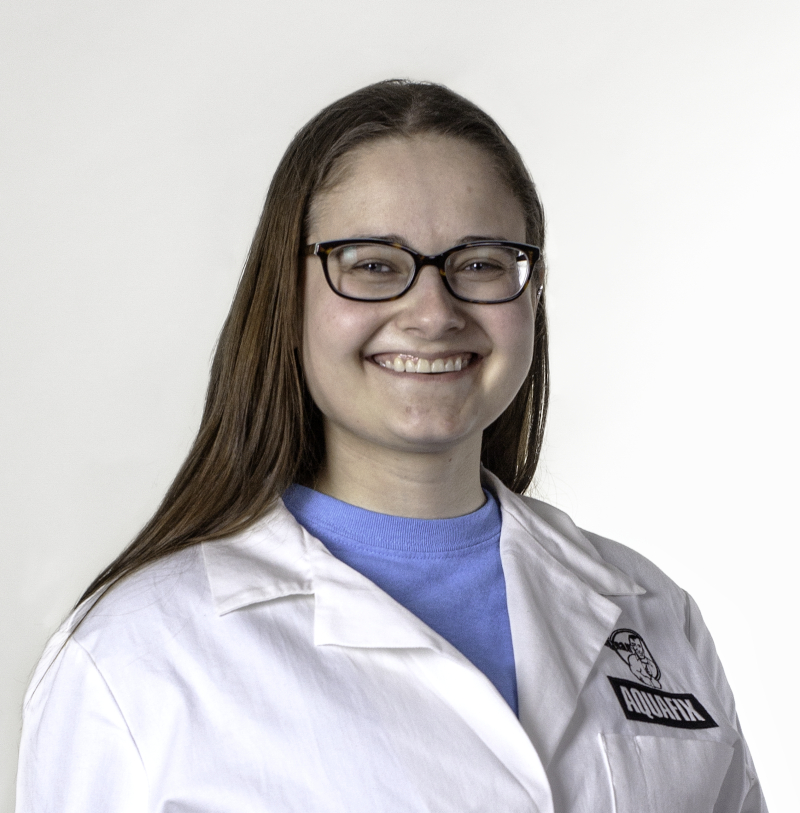The Secret Life of Bugs:
Suctoria
The Vampire Organism
by Natalie Walton, Aquafix Microscopist
Suctorians are one of the more interesting protozoa found in wastewater, at least to me; in particular, I find the way they look and how they feed fascinating. If you’ve never seen a suctorian before they can easily be mistaken for a doodle. They have a circular or bell-shaped body which is attached to a stalk. Extending from their bodies are multiple tentacles that can range from 1-2 μm thick and can be over 100 μm in length. Now this is where it gets interesting. Suctorians use these tentacles to feed on other organisms, such as swimming ciliates, amoebas, and flagellates. How is that interesting you may ask? Well, their tentacles have a bulge at the end called a knob which contains haptocysts. When an unsuspecting organism is within range the suctorian will stab its prey with its tentacle, the haptocysts then evert, causing the two cells to rapidly cement together, thus immobilizing its victim. Then, the suctorian will consume its prey by sucking it through its tentacle like a straw. Now, after learning about the tentacles of a suctorian you can clearly see why other organisms would like to be aware of them, but why should we?

Suctorians are not the most common to find in a wastewater system, but when they are they typically indicate the plant is relatively healthy. However, suctorians can also be used as indicators of unfavorable conditions. If a suctorians tentacles are scrunched up, it is more than likely an indicator that the plant is experiencing elevated levels of ammonia. Typically, you don’t get to see their tentacles constrict in real time; however, I was lucky enough to catch this process on camera. Now, you can see it too!
Thank you for reading this edition of Secret Life of Bugs. Stay tuned for more!
Want to learn even more about Suctorians? Then check them out on our online microorganism database.
Have something under the microscope you don’t quite understand? Try our Microanalysis and Filament Origins Test Kit to get a comprehensive view of what is happening in your plant.

About the Author
Natalie Walton joined Aquafix in 2019 and focuses on performing microscopic analysis for customer samples, as well as conducting experiments on innovation in grease removal. She was also a key contributor to creating our Microorganisms Database supplying identification tips and research.
